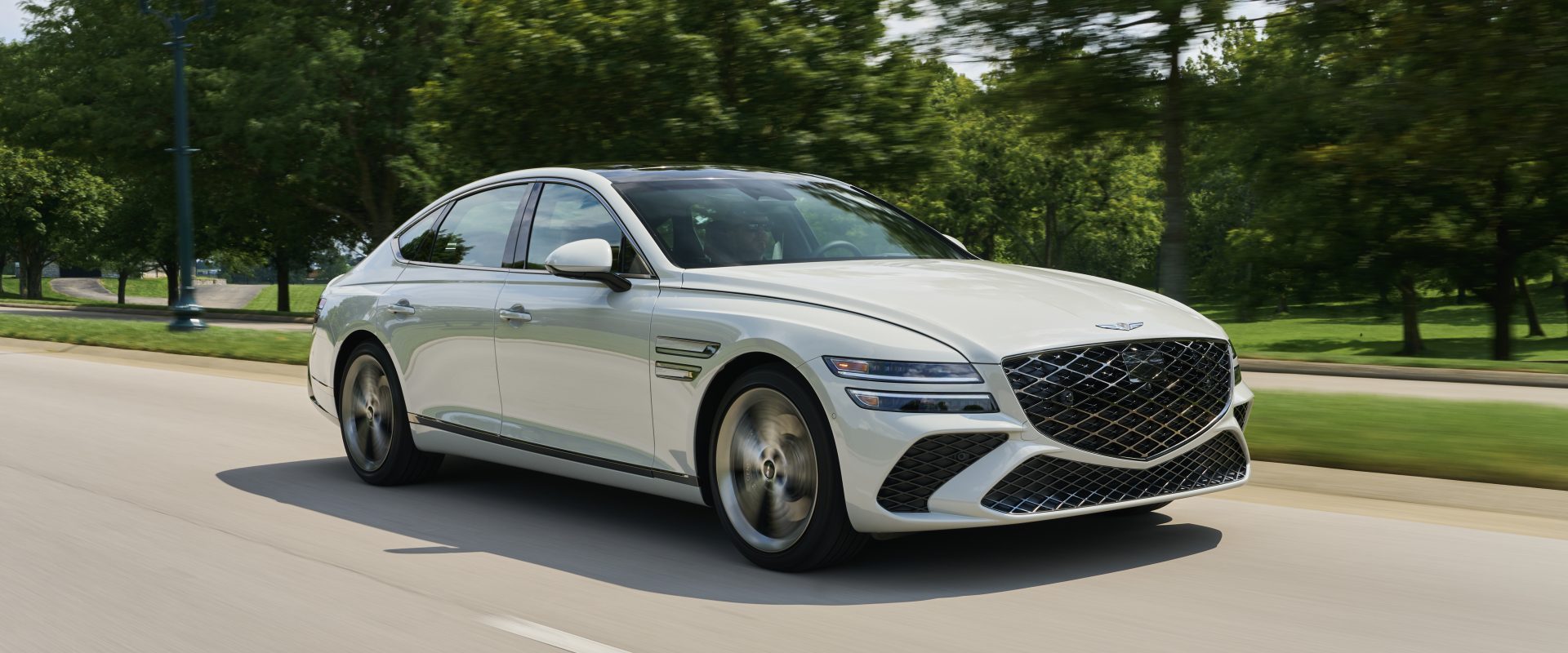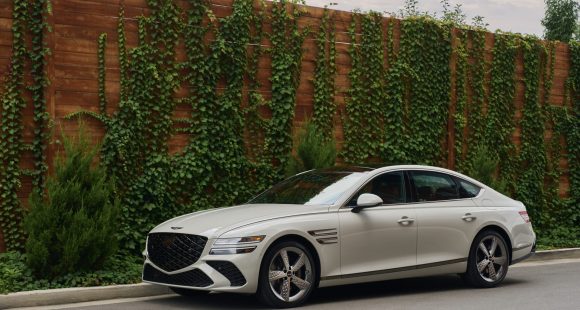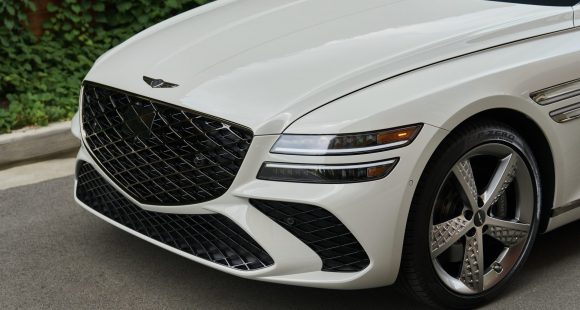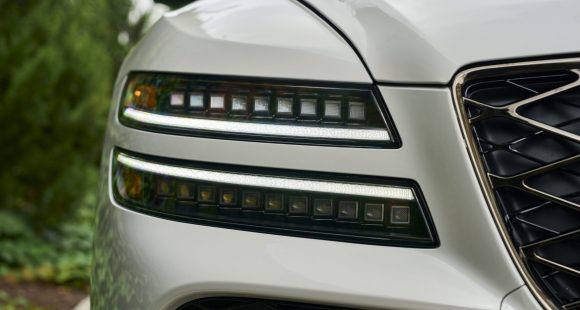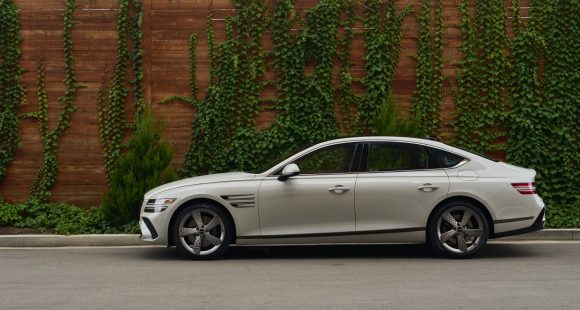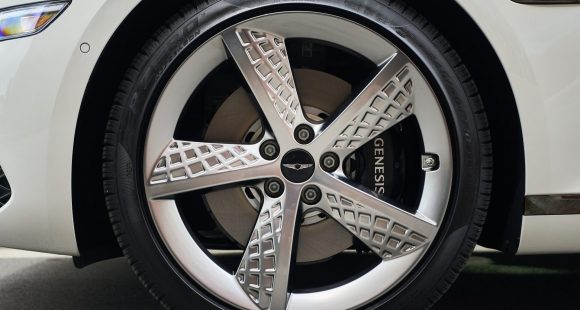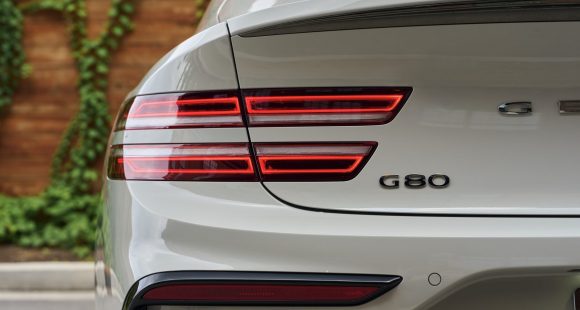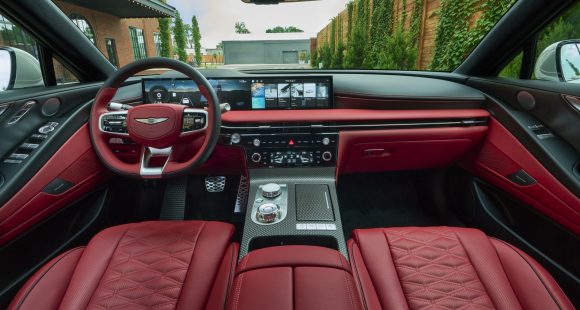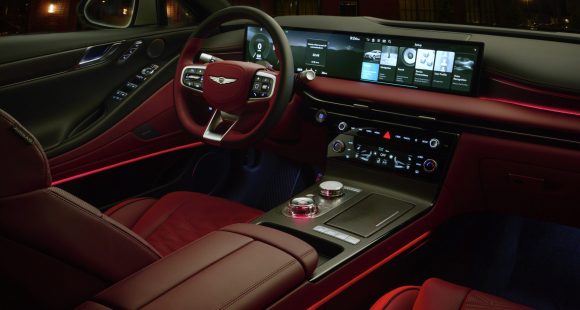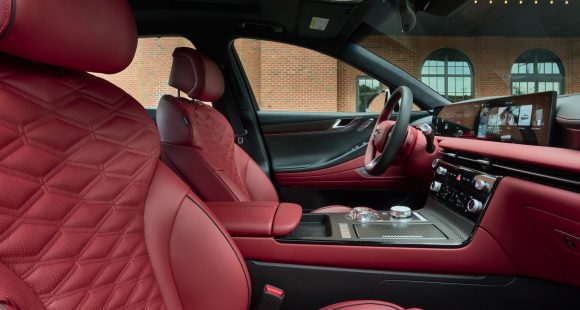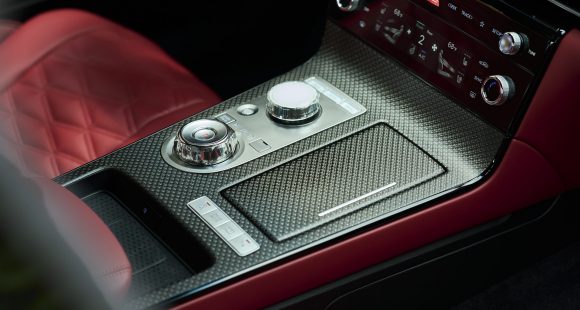2018 Toyota C-HR
The upside of the Scion brand’s demise is that things are getting a little more exciting at corporate parent Toyota. This re-branded C-HR, or coupe high rider, gives Toyota a much-needed entry into the subcompact utility category, and one with looks that are quite out there. But, does C-HR also deliver meaningful utility, or is it all about funky style?
First things first, the 2018 Toyota C-HR does indeed give Toyota another entry into what is the fastest growing vehicle choice today, utility vehicles. It slides under the Rav4 in their car-based crossover lineup. First revealed in concept form at the 2014 Paris Motor Show, the CH-R also indicates a bolder direction in overall Toyota design.
The production model clearly resembles that concept, but is far from an exact copy. The front end sets a very confident tone; while deep-cut body lines point towards the C-pillars, where there’s both a floating roof design and high-mounted door handles.
From there, an almost horizontal back glass leads to a hacked-off rear with its own aggressive lines. Wheelbase is less than an inch shorter than the RAV4, yet there’s over a foot difference in overall length. 18-inch alloys and 50-Series tires are standard.
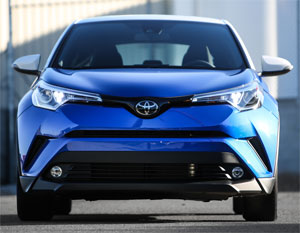 There are plenty of aero treatments that the kid’s love these days, including diffuser, spoiler, wheel spats, and even “vortex generators”.
There are plenty of aero treatments that the kid’s love these days, including diffuser, spoiler, wheel spats, and even “vortex generators”.
Those high-mounted door handles actually work great. But, do yourself a favor and skip the white roof option; unless you’re going for the taxicab look.
No all-wheel-drive for now, front-wheel-drive only. No factory turbo either, as those front wheels get power from a naturally aspirated 2.0-liter I4 good for 144–horsepower and 139 lb-ft. of torque. Toyota is leaving it to the aftermarket to add more.
Unfortunately, it’s CVT only for tranny duties.
But not so fast; that CVT does a good job of delivering the moderate power smoothly, and CVT-induced engine noise is relatively minor here, as is noise in general.
It’s also has a very solid feeling for a small ute, riding on the Toyota Prius’ recently updated New Global Architecture chassis. Handling is quite good, as it remains very flat in corners, urging you to push it harder than you probably should; though there’s not enough power here for you to really get yourself into too much trouble.
Through the rolling Hill Country around Austin, Texas, we found steering to be very quick, with good feedback through the wheel, as well as through the brake pedal.
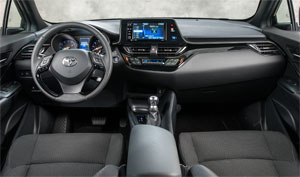 Things are very sporty in both look and feel inside, with a hip Scion-like touchscreen audio display, but no Satellite radio, Apple CarPlay, or Android Auto.
Things are very sporty in both look and feel inside, with a hip Scion-like touchscreen audio display, but no Satellite radio, Apple CarPlay, or Android Auto.
Likewise, gauges are more Scion than Toyota; with a 4.2-inch TFT multi-instrument display that gives lots of info including a G-Force monitor.
Front seat space is plentiful and are sufficiently comfortable. All controls are within easy reach. Rear seats are claustrophobic. Not a lot of space, and very little window to see out of; though there are belts for 3 back here.
Like many sub-compact crossovers, cargo space is just adequate; 19.0 cubic-ft. puts it slightly under the Honda HR-V, but much higher than the Mazda CX-3. Folding the seatbacks takes it to more acceptable 36.4 cubic-ft.
Now, as for what this Coupe High Rider crossover is not; well, despite its slick shape, it’s not a coupe, more of a 5-door hatchback. And it doesn’t ride overly high either, with just 5.9-inches of ground clearance. And it’s certainly not a traditional crossover without all-wheel-drive. So what’s left? A lot of target marketing and a respectable amount of fun.
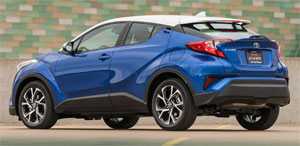 No skimping on safety features however. Toyota’s unfortunately-named Safety Sense P, with Pre-Collision System and Full-Speed Range Dynamic Radar Cruise Control, is standard, as are 10-airbags.
No skimping on safety features however. Toyota’s unfortunately-named Safety Sense P, with Pre-Collision System and Full-Speed Range Dynamic Radar Cruise Control, is standard, as are 10-airbags.
Government Fuel Economy Ratings are 27-City, 31-Highway, and 29-Combined. For a better than average Energy Impact Score of 11.4-barrels of yearly oil use with 5.0-tons of CO2 emitted.
As for the sticker prices? Base XLE trim starts at $23,460; XLE Premium, at $25,310. That puts it above the Mazda3, Honda HR-V, and Nissan Juke; however, both models are very well equipped, and without options to hike that price up further.
In today’s “multi-culti” world, where we try to combine the best attributes of all cultures; the 2018 Toyota C-HR tries to put crossover practicality into a conglomeration with youthful style and peppy performance; and for the most part succeeds very well.
But still, it’s a form over function piece that much like the Nissan Juke, will appeal mostly to city-dwelling urban adventurers who need an easy to park ride with more flexibility than the typical compact. But, even without all-wheel-drive, that may be enough to give the Scion faithful an easy entry into the “Mother Brand” and make this high ridin’ coupe a hit for Toyota.
Specifications
- Engine: 2.0 liter
- Horsepower: 144
- Torque: 139 lb-ft.
- EPA: 27 mpg city / 31 mpg highway
- Energy Impact: 11.4 barrels of oil/yr
- CO2 Emissions: 5.0 tons/yr
2025 Genesis G80
New Interior And New Tech Elevates G80 Sedan
Talk about bad timing. This second-generation G80 debuted at the height of a global pandemic. But that hasn’t stopped Genesis or this Bentley-on-a-budget sedan. In fact, since then, Genesis has unveiled a spectacular all-electric version and now given all G80s a makeover. So, let’s find out what a better and better-timed new G80 is ready to deliver.
Breaking into the luxury sedan scene requires going up against traditional brands with long pedigrees and legions of loyal buyers. But Hyundai has never shied away from a challenge, and has made steady progress with their Genesis brand, and hopes that a revised 2025 G80 midsize sedan will be their next step up.
Styling matters more when you’re the upstart, and the Genesis Athletic Elegance theme changes very little for ’25; just a new grille, slightly reshaped bumpers, new wheels ranging from 18 to 20 inches, and an updated color palette. The G80’s unique two-line LED headlamps get revised Micro Lens Array technology that boosts performance while minimizing the brightness for oncoming drivers.
Changes inside are much more significant with an entirely new dash and console, eliminating both the hooded gauge panel and dashtop wide info screen. Merging them together into one 27-inch wide LG panoramic display than runs from behind the steering wheel to over the center stack. There’s a bigger and more comprehensive control panel in the center stack; while the console gets less armrest coverage, more space for storage, and reshaped cupholders. The wider display is still a touchscreen, but there is also a console mounted controller if you prefer to keep it fingerprint free. Both options work well, but the controller is still too easy to confuse with the dial-like shifter.
Materials are on par if not a notch above most European luxury rivals, and there are 18 speakers to crank out 1,400 watts of premium sound from Bang & Olufsen. Top Sport Prestige trim comes with Nappa leather seats, carbon fiber trim, micro-suede materials for the headliner and pillar covers, heated armrests, head-up display, and upgraded active safety features. Front seats are immensely comfortable without feeling overly soft, and there’s plenty of comfort and room for adults in the back seat.
More Bentley than Benz; streaking down the track with European-style solidity that gives you very little indication of the high speed you’re traveling at.
Same powertrains as last year. Base power comes from a 300-horsepower 2.5-liter turbo-four; the upgrade is this 3.5-liter twin-turbo V6 that outputs 375 horsepower and 391 lb-ft of torque. Both are hitched to standard all-wheel drive. At our Mason Dixon Dragway test track, the AWD delivered enough grip for consistent slip-free launches. We hit 60 in 5.0 seconds flat. Run after run, the 3.5T pulled as strong as it sounds. All G80s work with the same paddle-shift eight-speed automatic transmission, and while shifting was silky smooth on the street, here on the track with Sport Mode and wide-open throttle they were noticeably firmer and quicker.
It was a very surreal experience in the cabin. More Bentley than Benz; streaking down the track with European-style solidity that gives you very little indication of the high speed you’re traveling at. For us, that was 105 mph in 13.4 seconds at the quarter. In addition to the G80’s Sport Mode that tightens steering, improves throttle response, adjusts shifting points, firms up the suspension, and reconfigures stability system parameters; Sport Prestige trim adds rear-wheel steering and an electronic limited slip differential. But, even with all of that, it didn’t feel overly sporty in our handling course. Now, we were able to comfortably carry quite a bit of speed through the cones, but there was just an overall soft, somewhat disconnected and heavy presence that had us unsure of how hard we could push. Sport Prestige also adds upgraded performance brakes. They were plenty capable, bringing this 4,600-lbs. luxury liner consistently down from 60 in just 104 feet with little fade.
Government Fuel Economy Ratings for the six-cylinder are 16 City, 24 Highway, and 19 Combined. We averaged a good 21.3 mpg of Premium. Still, that’s a slightly below average Energy Impact Score, using 15.7 barrels of oil annually with 7.8 tons of CO2 emissions.
Considering the amount of luxury packed into the G80, its $58,350 starting price, even though slightly higher than last year, remains pretty remarkable. It’s a substantial step up to the 3.5T though, as it begins at $70,850.
Genesis has existed as a standalone luxury brand for just less than a decade, and it has indeed been making steady progress into what is surely the hardest segment of all to master. The 2025 Genesis G80 sedan continues to impress and is a great option for luxury-minded buyers who prioritize true value over badges.
Specifications
As Tested
- Engine: 3.5-liter twin-turbo V6
- Transmission: eight-speed automatic
- Horsepower: 375
- Torque: 391 lb-ft
- EPA: 16 City | 24 Highway | 19 Combined
- 0-60 mph: 5.0 seconds
- 1/4 Mile: 13.4 seconds at 105 mph
- Braking, 60-0 (avg.): 104 feet
- MW Fuel Economy: 21.3 mpg (Premium)







